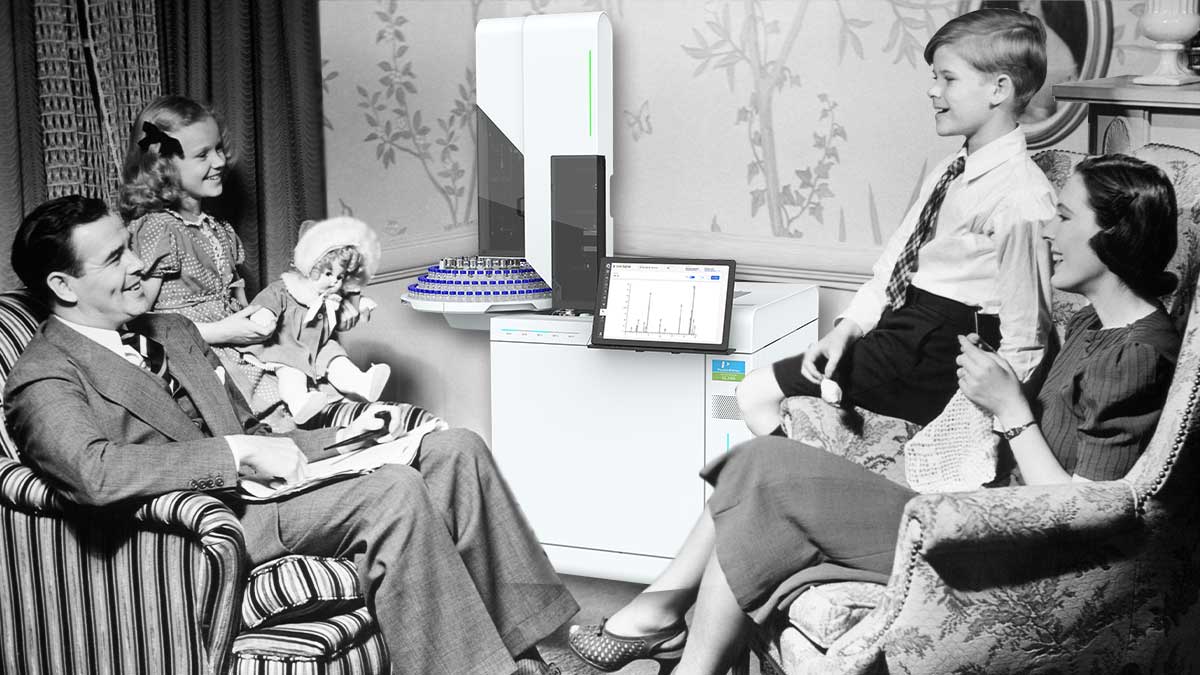3 Questions About GC No One Asked in 1955
The first commercial gas chromatography instrument dates back to the 1950s. Seven decades later, driven by its versatility, GC plays a substantial role in most analytical laboratories. In fact, with 70 years of analytical studies behind it, GC is viewed as de rigueur… with any possible questions already answered.
Not quite.
Any technology must be regarded in the context of its time, and GC is no exception. Here are three “2022 questions” that A. T. James, A. J. P. Martin, and Erika Cremer could never have conceived of in 19551.
1. Could a GC system help address the need for live status updates remotely?
Yes! The driving force behind this question lies in the labs’ interest in dealing with the potential of smart technologies, which were already trending very high in pre-pandemic times. The demands for social distancing restrictions, work-from-home and hybrid working shifts, and labor shortages further accelerated many GC labs’ consideration of implementing “smart” strategies. Remote interactions with lab instrumentation escalated to a critical priority to protect people during the pandemic.
In the post-pandemic scenario, the concept of “remoteness” has evolved from a focus on safety to a focus on the operational efficacy of labs. Having live status updates remotely from the labs better supports the new work approaches, allowing the GC analytical setup to adapt to the users’ needs and not vice-versa.
2. Is there a way to reduce the costs of adopting new technology for Chromatography Data System (CDS) software?
Here’s another question that the founders of GC couldn’t see coming. When considering new CDS Software, labs need to keep adoption costs top of mind. According to The Technology Acceptance Model, an information systems theory that models how users come to accept and use technology, users approaching a new technology are influenced by factors that can be grouped into these two categories2:
- Usefulness: The degree to which a person believes that using a particular system would enhance their job performance; and
- Ease-of-use: The degree to which a person believes that using a particular system would be free from effort
Adopting CDS Software with an intuitive user interface is an efficient choice for the GC lab. CDS Software can help minimize training costs and enable staff to operate faster, reducing the time from adoption to ROI.
3. How can GC help support sustainable practices?
Sustainability is an important concept that fully emerged when scientists began understanding the importance of protecting our number one resource: the earth. In the modern lab, sustainable practices are often used to mitigate and reduce the negative impact certain processes can have on the environment and businesses.
A typical example for GC is gas consumption. By using helium, a non-renewable resource, GC systems can have a significant impact on the environment. Using helium can also create a consequent toll on lab costs, as helium is subject to shortages and price variability. Therefore, labs need to find ways to reduce helium consumption, such as having alternative solutions for carrier gases.
There’s a great need for lab managers to take into consideration practices that are also business-sustainable, allowing their labs to be economically functional. GC Systems can provide efficient lab practices by having a small carbon footprint and offering the flexibility needed to grow with the lab needs.
Curious to know more? Attend our upcoming Webinar to learn how the PerkinElmer GC 2400 Platform can answer the questions above and much more. Register today.
Notes:
- https://www.chromatographyonline.com/view/beginnings-gas-adsorption-chromatography-60-years-ago
- https://en.wikipedia.org/wiki/Technology_acceptance_model

